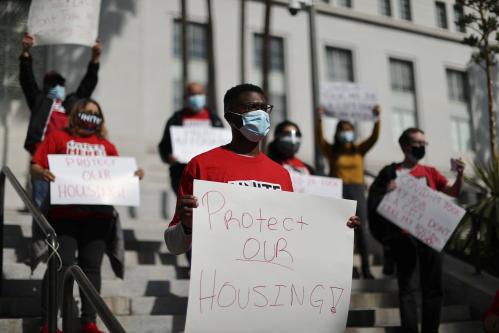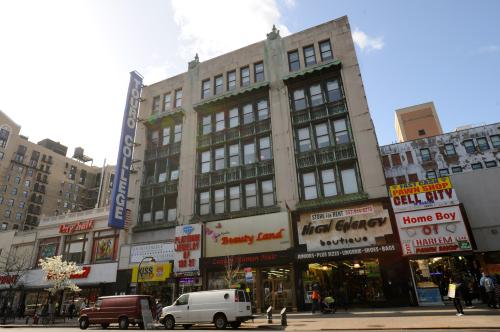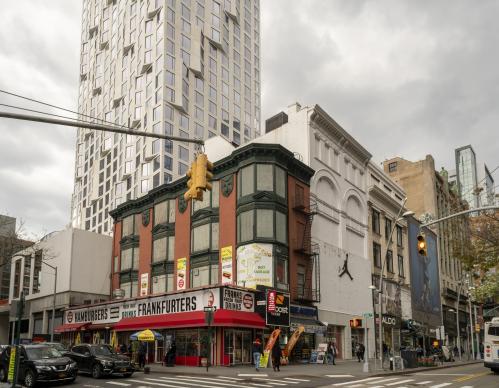Housing discrimination on the basis of race has been outlawed for more than half a century, yet Americans still reside in neighborhoods significantly divided by race and, to a lesser extent, class. Although this state of affairs has multiple causes, one of the most important is land use regulations that are used by cities and towns to exclude certain types of people from neighborhoods and even entire towns. Zoning in particular is one such tool.
Zoning: A very brief history
Zoning first emerged in Germany in the late 19th century as a tool to reinforce emerging land use patterns in cities.[i] The concept of zoning quickly caught on spreading to other European cities and eventually crossing the Atlantic in the first decades of the 20th century.
American cities too, were in need of greater order to prevent manufacturing, commercial and residential uses emerging into a jumble and inchoate mess. But zoning was also put to more nefarious uses on this side of the Atlantic. Southern and border state cities were among the first in the US to adopt zoning, using it to divide their cities into separate Black and white sections. At least 21 cities followed Baltimore’s lead before such zoning was ruled unconstitutional by the Supreme Court in Buchanan v. Warley in 1917.
Although racial zoning was ruled unconstitutional, zoning would continue to be used as a tool to segregate “undesirables” including Blacks from those more advantaged. New York City’s adoption of a zoning ordinance in 1916 was motivated, in part, by a desire of affluent merchants on the East Side of Manhattan to keep out of their tony shopping districts garment factory workers in the nearby garment district. Indeed, in Euclid v. Ambler, the 1926 Supreme Court decision that sanctioned zoning, apartment buildings (and presumably their unwashed occupants) were described as “parasites” in the midst of single-family residential districts.
Since the early 20th century, zoning has continued to be a tool used to separate the poor, who are disproportionately people of color from certain neighborhoods. This can be done, for example, by allowing only single-family homes or homes on large lots, both of which will exclude more affordable housing.
Because the determinants of one’s life changes are so tightly connected to where one lives, the implications of such zoning for inequality are enormous. Where one lives influences where they go to school, their exposure to crime and policing, and the types of stores they have access to. For homeowners, where one lives is perhaps the most important determinant of a family’s wealth.
Race inequity and zoning
To address the inequalities that often arise from zoning and other major land use regulations, racial equity analyses should accompany their adoption. The logic of racial equity analyses is akin to that which undergirds Environmental Impact Statements (EIS). Federal and some state and local laws require an EIS for projects that will substantially impact the environment. New York City, for example, requires an EIS for any project that must undergo the city land use approval process including the use of eminent domain, rezonings, and the disposition of publicly owned land. These EISs allow project proponents and other stakeholders to identify potential damages to the environment and propose remedial action.
In a similar vein, major land use changes could also require a racial equity analysis. The scope of such analyses could include how the costs and benefits of such an action are distributed across racial/ethnic groups, the risks of displacement disaggregated by race/ethnic group, and how the proposed development would relate to current residential segregation patterns.
As an example, imagine a low-density neighborhood that is rezoned to allow increased density. The neighborhood is predominantly white in a fairly segregated city. The rezoning is part of a proposed development that will include new market rate units. An EIS would require the developer to show how the new development will impact the environment, considering impacts on sensitive land uses, air quality and the like. A racial equity analysis would look at the likely racial composition of the new development, whether or not displacement was likely to occur, and if so in a racially disparate manner. The analysis would also take into consideration how the anticipated demographic composition of the new development would influence existing residential segregation patterns.
Already, some cities have begun to implement policies that require explicit consideration of proposed developments’ impacts on racial equity. For example, New York City is adopting a law requiring the anticipated impacts on racial equity be documented for large-scale housing projects that require city approval. Seattle’s comprehensive planning efforts include a focus Growth and Equity Analysis as part of their decision-making process for rezoning.
As America reckons with the legacy of ongoing racial injustice it is clear that more than platitudes will be necessary. Concrete steps that redress racial inequality are necessary. Racial equity analyses in land use decisions could be one step on the road to a racially just America.
Footnotes
[i] Baumeister, R. 1876. Stadterweiterungen in Technischer, Baupolizeilicher und Wirthschaftlicher Beziehung. Berlin: Verlag von Ernst & Horn.







Commentary
Build race equity into rezoning decisions
July 13, 2021